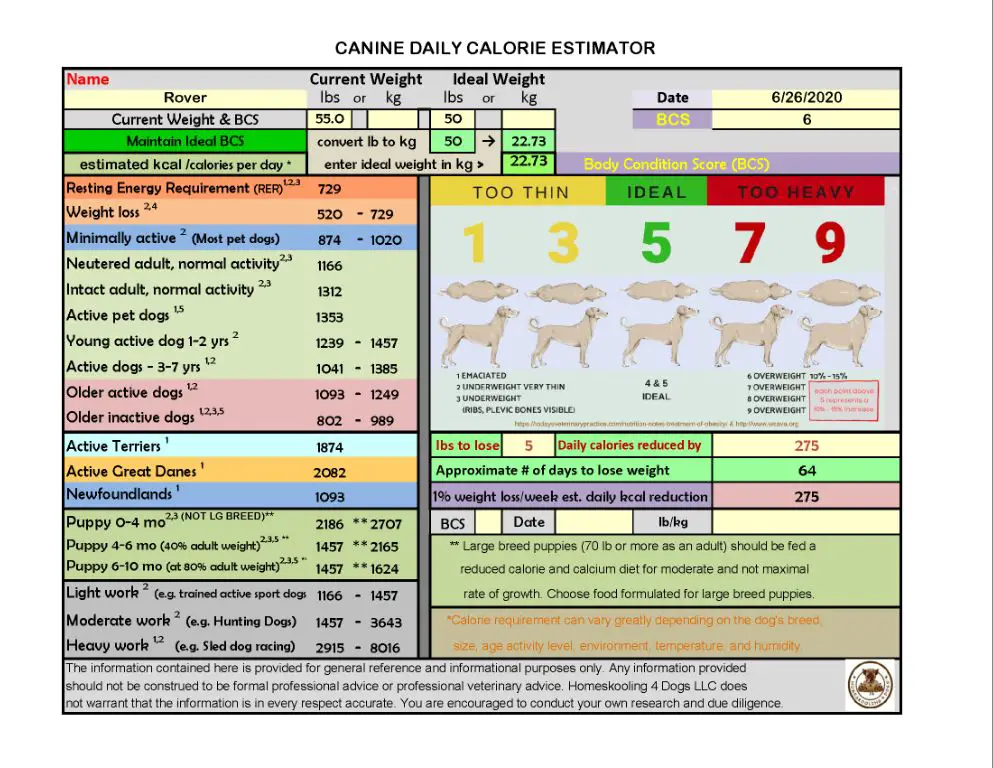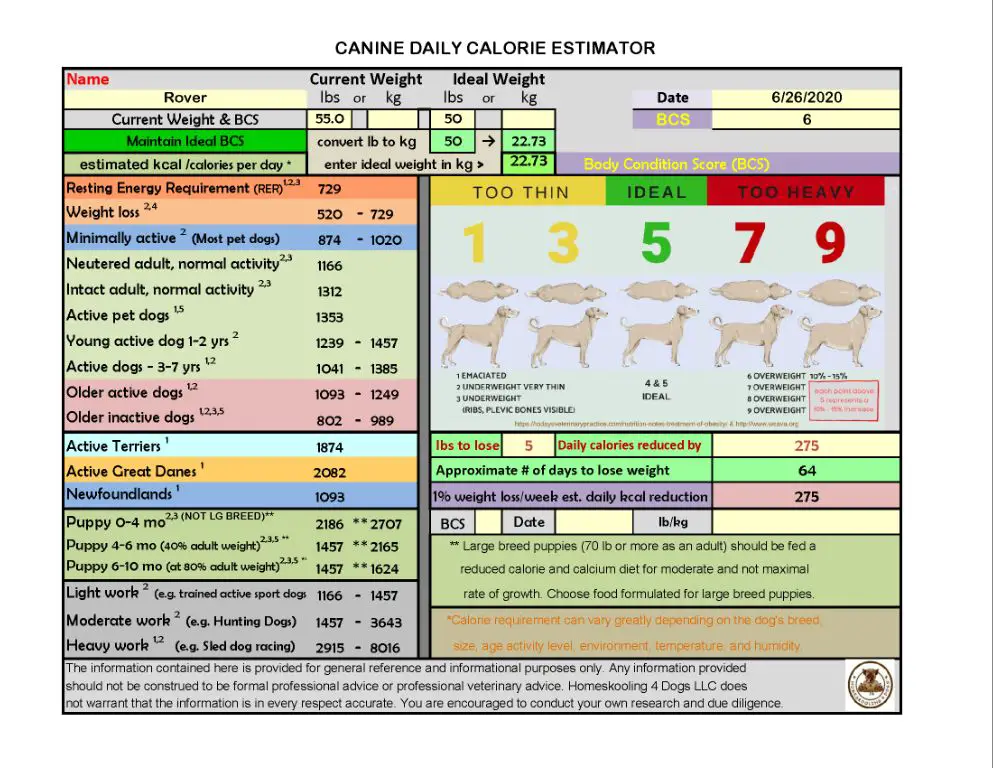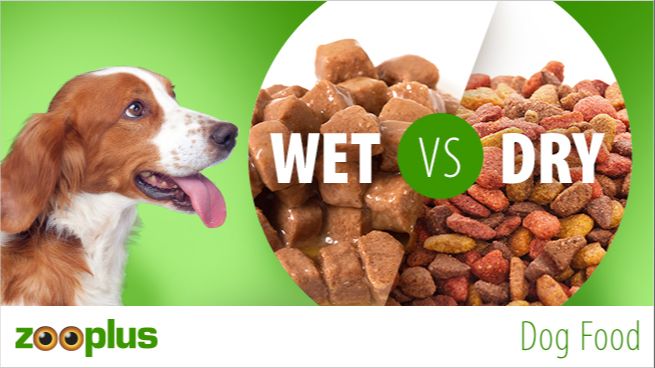Introduction
How much food and calories a dog needs each day depends on factors like their breed, size, age, and activity level. While requirements vary, knowing the number of calories in your dog’s food is important. Monitoring calorie intake helps ensure your dog maintains a healthy weight and ideal body condition.
Overfeeding and excess calories can lead to canine obesity, which puts dogs at risk for joint problems, breathing issues, diabetes and other health concerns. Underfeeding and too few calories compromises growth in puppies and causes weight loss. That’s why understanding calorie content in dog food matters.
Calorie Content by Life Stage
A dog’s calorie needs change significantly during the different stages of their life. The main life stages to consider when determining a dog’s calorie requirements are:
Puppies
Puppies generally require around twice as many calories per pound of body weight compared to adult dogs. This is because puppies are growing and developing rapidly. On average, puppies need 30-70 calories per pound per day depending on their breed, size and activity level.
Adult Dogs
Once dogs reach adulthood around 12-24 months, their calorie needs decrease. Adult dogs usually require 20-40 calories per pound per day to maintain their ideal weight, again depending on breed, size and activity level.
Senior Dogs
As dogs reach 7-10 years of age, they are considered seniors. At this stage, their metabolism slows down and activity levels decrease, so calorie needs decline. Senior dogs generally need around 20-30 calories per pound per day.
It’s important to adapt a dog’s calorie intake to match their life stage to ensure they get adequate nutrition without consuming excess calories.
Calorie Content by Size
The calorie content in dog food can vary significantly based on the size of the dog. This is because larger dogs generally require more calories per day than smaller dogs.

Here is a rough breakdown of calorie needs by dog size:
Small Breed Dogs (up to 20 lbs)
Small breed dogs require between 240-350 calories per day on average. Small dogs have faster metabolisms and need more calories per pound of body weight.
Medium Breed Dogs (21-50 lbs)
Medium breed dogs require 700-900 calories per day on average. As medium sized dogs are more active, their food contains slightly higher calorie levels.
Large Breed Dogs (51-90 lbs)
Large breed dogs require 900-1200 calories per day on average. Their larger size and higher activity levels mean they need more total calories.
Giant Breed Dogs (91 lbs and up)
Giant breed dogs require 1200-2000 calories per day on average. Giant breeds like Great Danes have the highest calorie needs due to their substantial size and activity levels.
When comparing dog foods, look at the calorie content per cup or per kg to determine if it fits your dog’s size and energy needs.
Calorie Content by Activity Level
The activity level of your dog is a major factor in determining how many calories they need each day. Dogs can be categorized into three main activity levels:

Active
Active dogs get a lot of exercise and are kept busy throughout the day. Examples include dogs that hike, run, swim, herd livestock, or compete in sports like agility or dock diving. Active dogs need the most calories per day to fuel their higher energy requirements.
Moderately Active
Moderately active dogs get a moderate amount of exercise each day through activities like walking, playing fetch, or light jogging. These dogs maintain a healthy weight but are not exercising for extended periods most days. Moderately active dogs need a medium calorie intake.
Sedentary
Sedentary dogs get minimal exercise and spend most of their time napping or resting. These dogs may only go on short walks or light play. Older dogs often fall into this category. Sedentary dogs require fewer calories per day to avoid weight gain.
Knowing your dog’s activity level is key in choosing the right calorie intake to maintain their health and physique. More active dogs need more calories, while less active dogs require much less.
Wet vs. Dry Dog Food

Wet and dry dog foods differ significantly in their calorie density. This is an important consideration when counting calories for your dog’s diet.
Dry kibble is much more calorie dense than wet canned food. Kibble has had most of its moisture removed during processing, leaving behind concentrated calories. Just one cup of dry dog food may contain well over 300 calories.
Meanwhile, wet dog food has much higher moisture content from all the gravy, broth, or juices. A typical can of wet food contains around 100 calories per cup or less. The increased moisture makes dogs feel fuller on fewer calories.
If you are feeding mainly dry kibble, the calories can quickly add up. Switching to wet or mixed wet and dry is an effective way to reduce caloric intake while still providing satisfaction. When counting calories, be sure to check labels carefully, as even small amounts of dry kibble can contribute significant calories.
Calorie Sources
Dog food calories come from three main nutrient sources: protein, fat, and carbohydrates.
Protein is essential for building muscle, repairing tissue, proper enzyme function, and more. Protein sources like chicken, beef, fish, eggs, and legumes are leaner and provide around 3-4 calories per gram.
Fats supply fatty acids for skin/coat health and are a concentrated source of energy at 9 calories per gram. However, some fats like chicken fat and fish oil are healthier than lower-quality filler fats.
Carbohydrates including grains, potatoes, peas, etc. provide glucose for energy. They contain around 4 calories per gram.
The highest quality dog foods derive a majority of calories from animal-based proteins and healthier fats. Lower quality brands rely more heavily on carbohydrate fillers as cheap calorie sources.

Calorie Calculators
There are several handy online calculators available to help determine your dog’s calorie needs based on factors like their age, weight, breed, and activity level. These tools can provide a more customized calorie recommendation tailored to your individual dog.
Some popular calorie calculators include:
- Purina – Asks for your dog’s age, weight, breed, spay/neuter status, and activity level to calculate maintenance calories per day.
- Pet Nutrition Alliance – Calculates RER (Resting Energy Requirement) based on weight, neutered status, age, and activity.
- PetDiet – Requires breed, weight, age, gender, spay/neuter status, and lifestyle to estimate calorie needs.
- Royal Canin – Considers breed, age, size, neuter status, and lifestyle for custom recommendations.
These calculators provide rough estimates, but individual dogs can vary. It’s best to start with the calculator results, monitor your dog’s weight, and adjust as needed. The bag feeding guides on dog food packages can also provide a starting point.
Reading Labels
When shopping for dog food, it’s important to read the nutritional information on the label to determine the calorie content per cup or can. Here’s what to look for:
- Guaranteed Analysis – Provides minimum percentage of crude protein and crude fat. You can use these percentages to estimate calories.
- Calories Statement – The most accurate indicator of calories per cup or can of food.
- Serving Size – Pay attention to the serving size listed, as the calories are for that amount.
- Ingredients – First 5 ingredients provide most calories. Meat sources have more calories than grains.
You can also look at feeding guides on the label which recommend amount to feed based on your dog’s weight. This can give you an idea of total calorie intake.
If the label does not list calorie content clearly, you can contact the manufacturer for more specifics on the calorie count of that particular formula.
Weight Management
A healthy weight is important for your dog’s wellbeing. Obesity can lead to many health issues like diabetes, heart disease, and arthritis. On the other hand, being underweight can make your dog prone to illness and frailty.
The best way to maintain a healthy weight is to feed an appropriate amount of calories based on your dog’s size, age, and activity level. It’s also important to monitor your dog’s body condition score regularly. You should be able to feel but not see your dog’s ribs without excess fat deposits.
Regular exercise is another key component of weight management. Taking your dog for daily walks and playing fetch helps burn calories and build muscle. Just be sure not to overexercise a puppy or senior dog.
If your dog becomes overweight, talk to your vet about creating a tailored weight loss plan involving diet and exercise. Gradual weight loss of 1-2% per week is recommended. Rapid weight loss can be dangerous and lead to malnutrition. With proper portion control, consistent exercise, and vet supervision, your dog can safely return to an ideal weight.
Conclusion
To summarize, the number of calories your dog needs depends on several factors including their life stage, size, activity level, and whether you feed them wet or dry food. Puppies and pregnant/nursing dogs need more calories for growth and milk production. Larger, more active dogs also require more calories. Wet dog food tends to have fewer calories per cup than dry kibble. It’s important to read labels carefully, choose an appropriate food for your dog, and monitor their weight. Don’t just go by the recommended feeding amount on the bag – this may need to be adjusted up or down. With the right amount of balanced nutrition, your dog can thrive and maintain a healthy weight.